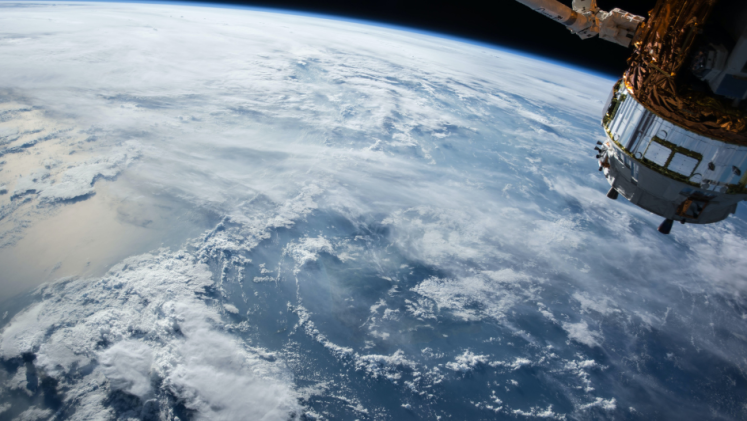Outer space is a vital shared resource. Our infrastructure up there is essential to our lives down here. Satellites gather data for purposes such as monitoring weather, tracking environmental changes and supporting life-saving early warning systems. Space is of immense value to us, yet we continue to use it at the expense of our own well-being. After decades of launching objects into space, we have left so much discarded junk and pollution in our wake that one collision could set off a chain reaction that leaves the entire system at risk of destruction.
The recent UNU-EHS Interconnected Disaster Risks 2023 report includes the issue of space debris among its six risk tipping points, which, if reached, could have devastating consequences for people and our planet.
Here are five things you should know about space debris:
What goes up does not necessarily come down
Currently, there are 35,150 tracked objects in orbit, and only about 25 per cent are working satellites. The rest are mostly junk, such as broken satellites or discarded parts of rockets. Furthermore, there are likely around 130 million pieces of debris too small to be tracked. Projections estimate more than 100,000 new spacecraft will be launched by 2030, compared to the 8,000 currently in orbit, calling greater attention to the problem.
As we continue to pollute our orbit, we will eventually reach a tipping point
The more satellites we launch, the more crowded space will become, which increases the risk of collision. Once there is a critical density of objects in orbit around Earth, one collision can set off a chain reaction, causing our orbit to become so dense with shrapnel that it becomes unusable. This is referred to as the Kessler Syndrome, which the Interconnected Disaster Risks report treats as a tipping point.
Collisions have happened before, and avoidance manoeuvres are common
Objects in space travel at speeds over 25,000 km/hr, making any collision potentially catastrophic. Even the tiniest piece of debris can cause significant damage. Remnants of debris from a 2009 collision between a defunct satellite and a functioning communications satellite remain in orbit today. While satellites can be warned of potential collisions ahead of time, carrying out an avoidance manoeuvre is difficult and requires precise communication.
Technology to remove debris is not yet available on a large scale
Active Debris Removal (ADR) technology is currently being tested by various space agencies and companies to remove orbital debris. However, ADR has not developed far enough to be used. Therefore, we have very limited abilities to clean up our pollution and often must wait for it to fall out of orbit naturally, which can take years to several centuries. Instead, governments and companies should have an end-of-life plan for all orbital objects and operators should be held responsible for sustainable deorbiting. Ideally, such measures should be implemented during the design of a satellite.
Binding international agreements are needed to secure our eyes in the sky
There are no binding international rules for mitigating space debris. In recent years, guidelines and best practices have been developed by various international organizations, space agencies, and governments. However, compliance remains limited, highlighting the growing need for more comprehensive rules and regulations to keep space safe.



